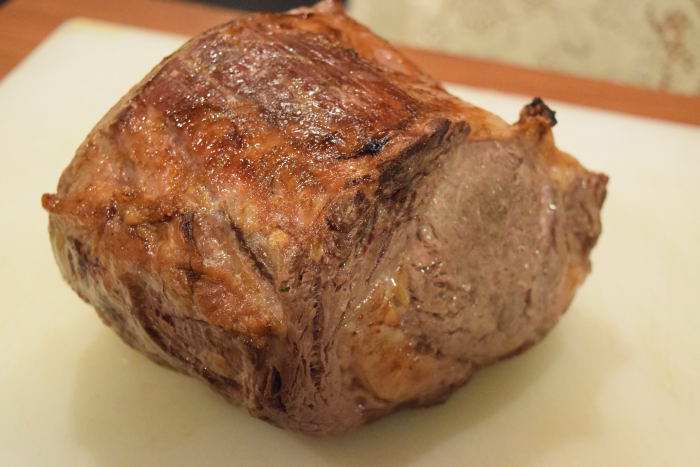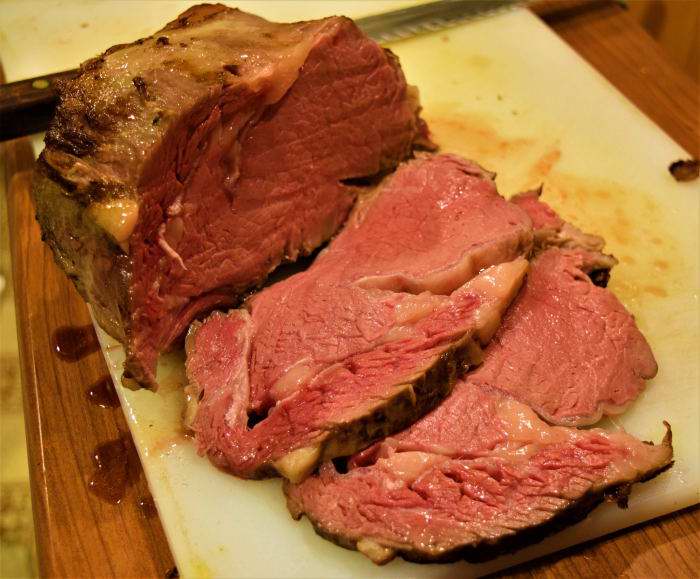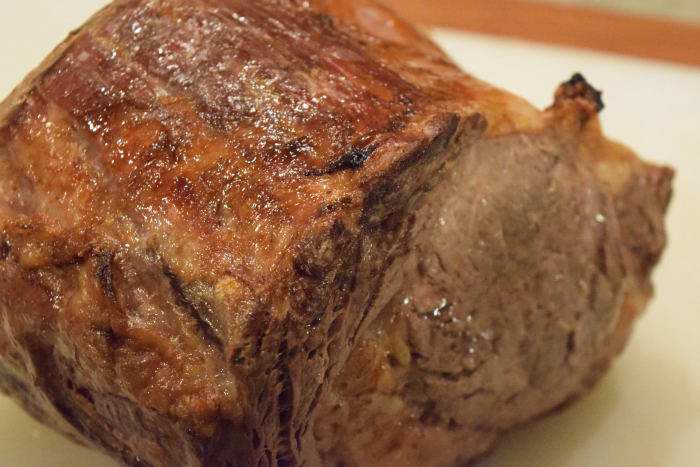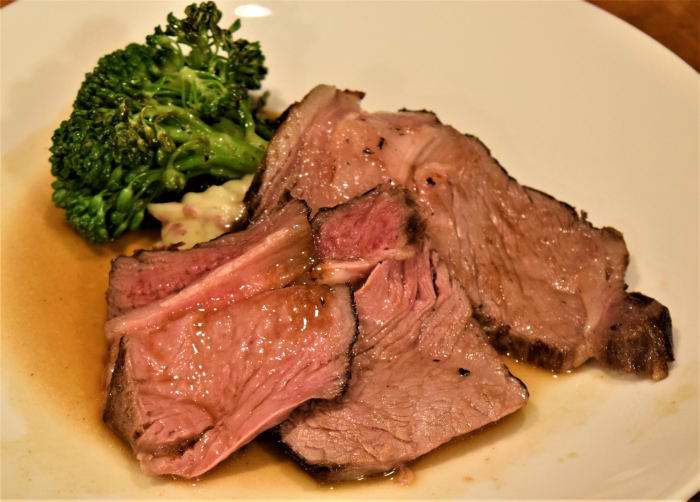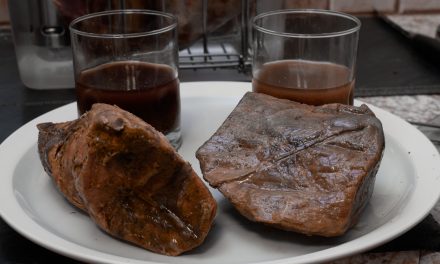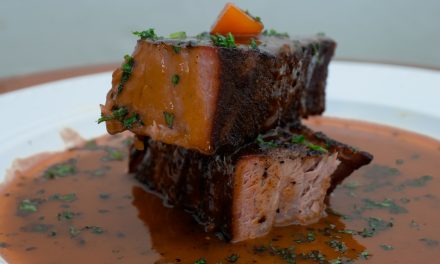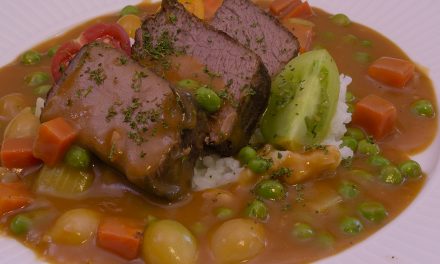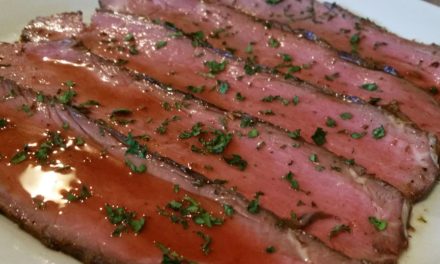How long is too long?
The FaceBook group that was the inspiration for this website has really grown over the last five years. We now have many long time members who are very skilled in Sous Vide. Even so, the group has always been dedicated to introducing newcomers to the technology, and to help them distinguish between romantic notion and scientific fact. I admit, I grow impatient and weary of the same basic questions week after week. I try to remind myself that there was a time when I believed in infusion and other manufacturer driven claims as to what sous vide is good for, what it does.
So, I have come to one of the major topics of discussion and debate, and confusion, just how long is TOO long? Even though sous vide is very forgiving when it comes to duration, there must be SOME parameter that indicates eventual deterioration of product. I’m proud to see that people actually use tables to determine the correct processing intervals, I really am, it shows great devotion to precision. I have to chuckle, though, when I see somebody document their processing time as something like “3 hours and 13 minutes.” Certainly, this number was based on calculations based on thickness of product and temperature, but I can’t help but imagine someone barreling towards their bubbling vessel in anticipation of the perfect moment to remove the bag from the water. There is no such moment.
Okay, Smart Guy, PROVE IT!
We have already documented the basic procedure for Sous Vide Prime Rib here, and you will see that we used 8-24 hours as our processing interval, @129F. I ended up pulling the Christmas prime rib after 15 hours, as a matter of convenience. It was dinner time! This time I decided to roll the dice and see just how wrong the prime rib could be done, so I repeated the basic process @127F, which has been recently endorsed as being safe. There has always been a buffer zone between the actual kill temp of 123F, to account for operator and mechanism error. I pulled some of the prime after 24 hours, and let some more go for 48. I know, I was kinda anxious.
I bought a premium brand, well, actually, my wife ran the errand for me and accidentally chose one of those chi chi labels, so it ran me $8.60 instead of $6.50. All in the name of science. As it turned out, this particular meat company is owned by Tyson foods, so, well, I will leave you to ponder that.
Side by Side
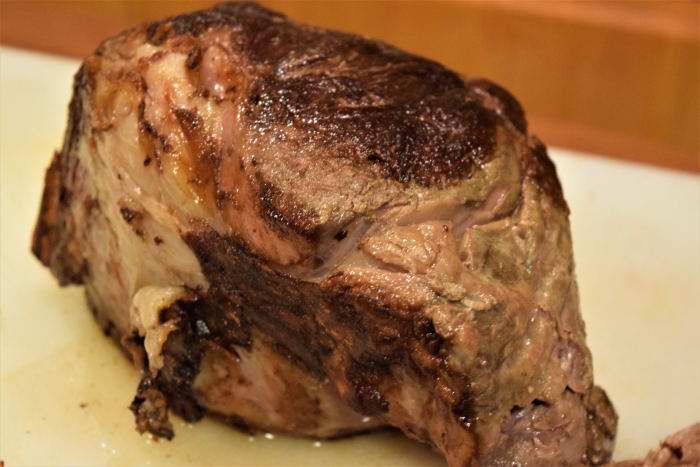
- This is the 24 hour model, after searing in a pan.
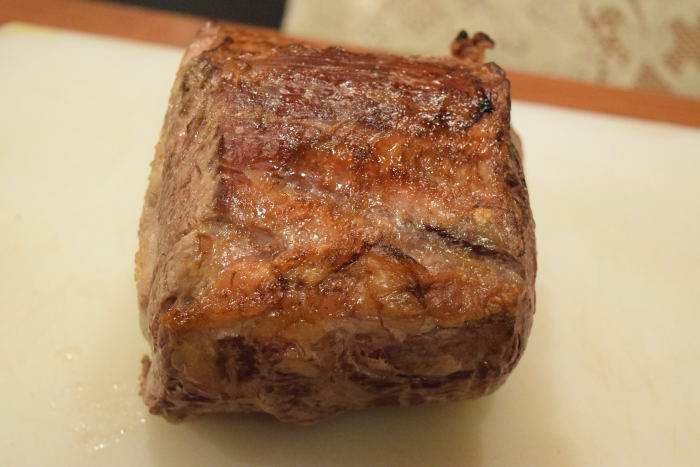
- And this is the 48 hour model, which I seared under the broiler element in my electric oven. I find this to be far superior to the other method, and easier too, one shot in and out. I’m not real fond of torches for this particular application.
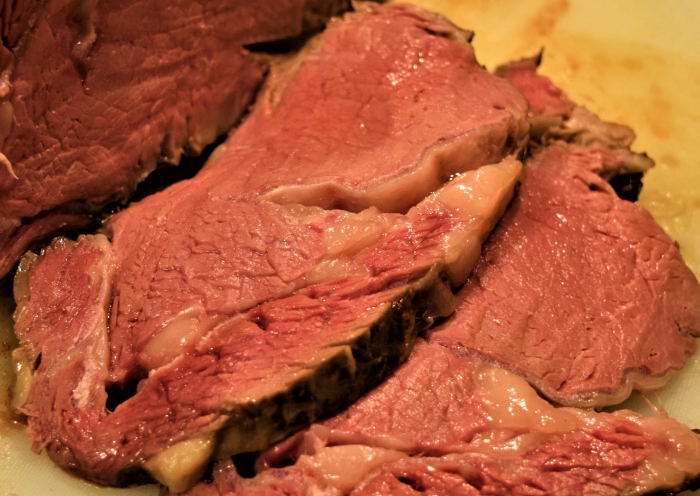
24
- Pretty much the way it’s supposed to be.
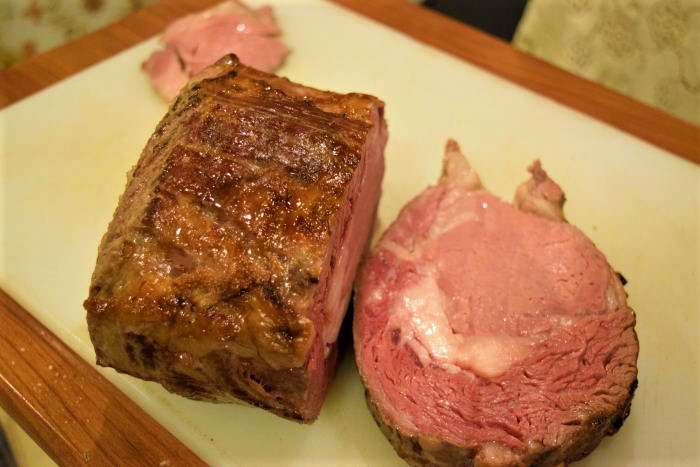
48
- Now, you can see that the internal fat does not appear fully rendered, which it shouldn’t be at that temperature.
- And, even though this looks good, you can see that there has been what is colloquially referred to as “exsanguination.” This term means that blood has been removed, so, it’s not accurate, technically. The simple fact is that myoglobin deteriorates and loses its color over time, when exposed to even temps as low as 127F, even lower. There was a lot of purge in this bag, about 2 cups, whereas there was about 1 cup in the first 2 pieces that I pulled after 24 hours, and that’s where the myoglobin goes, even if it doesn’t change color.
- The texture cannot be represented in the picture, but I can tell you, sure, it was very tender. Not unpleasantly so, though, and not any more tender than one would expect it to be assuming one prepared properly. With eyes closed, it tasted like perfect medium rare. It didn’t have that “more cooked” flavor that medium and beyond brings.
24
- Even 24 hours isn’t really necessary for choice prime rib. I would say for a five lb. piece, 10 hours would be just about optimum.
48
- This choice cut does have an excellent conformation profile, which refers to the actual shape of the animal. Short and blocky gives the best conformation, and, if you think about it, that makes perfect sense. You can see how big the spinus dorsalis is compared to the rest of the cut–that’s not always like that, but that’s what you want. Texas Longhorn cattle is excellent in flavor, but the New York Steaks are so long, they can’t really be fit on a reg’lar plate.
24, English cut.
- The so called English cut is sliced “wrong,” as in sideways. It looks kind of cool when you do it, and it goes along the bones, so you never separate them.
- It is full of gristle, and is cut with the grain. Some people insist on it that way, and there is no accounting for taste.
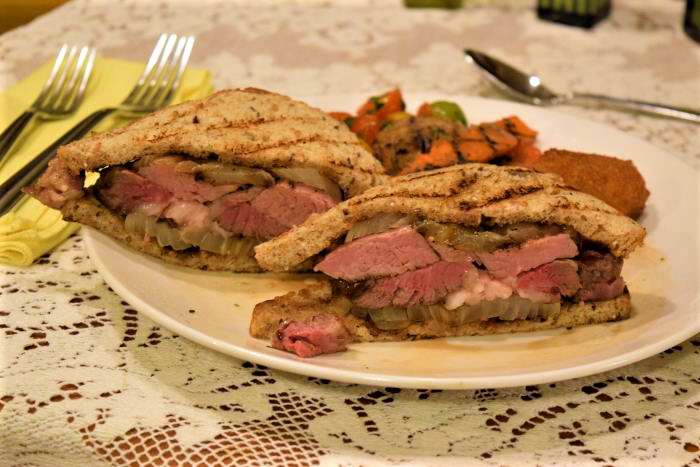
- Dry grill bread, the onions on both sides, hack up the spinus dorsalis, put the garniture under the furniture, don’t try this at home.

